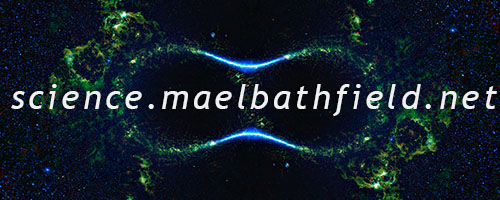Voici une compilation de (presque) tous les articles et livres cités dans mon article
Why Zeno’s Paradoxes of Motion are Actually About Immobility.
Foundations of Science, 2018, 23 (4), pp.649-679. ⟨10.1007/s10699-017-9544-9⟩

Articles de Journaux (32)
Cette archive contient les articles suivant :
Alper, J. S., & Bridger, M. (1997). Mathematics, Models and Zeno’s Paradoxes. Synthese, 110, 143–166.
Antonopoulos, C. (2004). Moving without being where you’re not; A non-bivalent way. Journal for General Philosophy of Science, 35, 235–259.
Ardourel, V. (2015). A discrete solution for the paradox of Achilles and the tortoise. Synthese, 192, 2843-2861.
Arntzenius, F. (2000). Are there really instantaneous velocities? The Monist, 83(2), 187-208.
Atkinson, D. (2007). Losing energy in classical, relativistic and quantum mechanics. Studies in History and Philosophy of Modern Physics, 38, 170–180.
Beth, E. W. (1946). Historical studies in traditional philosophy. Synthese, 5(5-6), 258-270.
Carroll, J. W. (2002). Instantaneous Motion. Philosophical Studies: An International Journal for Philosophy in the Analytic Tradition, 110(1), 49-67.
Hamblin, C. L. (1969). Starting and stopping. The Monist, 53(3), 410-425.
Harrison, C. (1996). The Three Arrows of Zeno : Cantorian and Non-Cantorian Concepts of the Continuum and of Motion Synthese, 107, 271-292.
Hasper, P. S. (2006). Zeno Unlimited. Oxford Studies in Ancient Philosophy, 30, 49-85
Jackson, F., & Pargetter, R. (1988). A Question about Rest and Motion. Philosophical Studies: An International Journal for Philosophy in the Analytic Tradition, 53(1), 141-146.
Lange, M. (2005). How Can Instantaneous Velocity Fulfill Its Causal Role? The Philosophical Review, 114(4), 433-468.
Laraudogoitia, J. P. (1996). A Beautiful Supertask. Mind, 105, 81-83.
Laraudogoitia, J.P. (2013). Zeno and flow of information. Synthese, 190, 439-447.
Lear, J. (1981). A note on Zeno’s arrow. Phronesis, 26(2), 91–104.
Lee, C. (2011). Nonconservation of momentum in classical mechanics. Studies in History and Philosophy of Modern Physics, 42, 68–73.
Lynds, P. (2003). Time and Classical and Quantum Mechanics: Indeterminacy vs. Discontinuity. Found. Phys. Lett., 16(4), 343-355.
Medlin, B. (1963). The Origin of Motion. Mind, 72(286), 155-175.
Meyer, U. (2003). The Metaphysics of velocity. Philosophical Studies, 112, 93-102.
Mortensen, C. (1985). The limits of change. Australasian Journal of Philosophy, 63(1), 1-10.
Owen, G. E. L. (1957). Zeno and the Mathematicians (Vol. LVIII, Proceedings of the Aristotelian Society). N.S.
Papa-Grimaldi, A. (1996). Why Mathematical Solutions of Zeno’s Paradoxes Miss the Point: Zeno’s One and Many Relation and Parmenides’ Prohibition. The Review of Metaphysics, 50(2), 299 – 314.
Peijnenburg, J., & Atkinson, D. (2008). Achilles, the Tortoise, and Colliding Balls. History of Philosophy Quarterly, 25, 187-201.
Priest, G. (1985). Inconsistencies in Motion. American Philosophical Quarterly, 22(4), 339-346.
Reeder, P. (2015). Zeno’s arrow and the infinitesimal calculus. Synthese, 192(5), 1315-1335.
Romero, G. E. (2014). The Collapse of Supertasks. Foundations of Science, 19(2), 209-216.
Smith, J. W. (1990). Time, change and contradiction. Australasian Journal of Philosophy, 68(2), 178-188.
Smith, S. R. (2003). Are instantaneous velocities real and really instantaneous?: an argument for the affirmative. Studies in History and Philosophy of Modern Physics, 34, 261–280.
Thomson, J.F. (1954). Tasks and Super-Tasks. Analysis, 15(1), 1-13.
Tooley, M. (1988). In Defense of the Existence of States of Motion. Philosophical Topics, 16(1), 225-254.
Vlastos, G. (1966). A note on Zeno’s arrow. Phronesis, 11(1), 3-18.
White, M. J. (1982). Zeno’s arrow, divisible infinitesimals, and Chrysippus. Phronesis, 27(3), 239-254.
Livres (8)
Cette archive contient les livres suivant :
Bachelard, G. (1934). La formation de l’esprit scientifique. (5th ed., Bibliothèque des textes philosophiques). Paris: Librairie philosophique J. VRIN.
Bergson, H. (1907). L’évolution créatrice (86th ed.). Paris: Les Presses universitaires de France.
Bergson, H. (1969). La pensée et le mouvant. Essais et conférences (1903 à 1923). Paris Les Presses universitaires de France.
Caveing, M. (1982). Zénon d’Élée, prolégomènes aux doctrines du continu: étude historique et critique des fragments et témoignages. Paris: Vrin (only pages 66-95 and 124-129)
Faris, J. A. (1996). The paradoxes of Zeno. Aldershot (Hants., England) ; Brookfield (Vt., USA): Avebury.
Mazur, J. (2007). The Motion Paradox: The 2,500-year-old Puzzle Behind All the Mysteries of Time and Space. New York: Dutton. (only PART 1)
Salmon, W. C. (Ed.). (1970). Zeno’s paradoxes. Indianapolis: Bobbs-Merrill.
Shamsi, F. A. (1973). Towards a definitive solution of Zeno’s paradoxes. Karachi: The Times Press.
Sections de livres (7)
Cette archive contient les sections de livres suivant :
Benacerraf, P. (1970). Tasks, Super-Tasks, and the Modern Eleatics. In W. C. Salmon (Ed.), Zeno’s paradoxes (pp. 103-129). Indianapolis: Bobbs-Merrill.
Bergson, H. (1970). The Cinematographic View of Becoming. In W. C. Salmon (Ed.), Zeno’s paradoxes (pp. 59-66). Indianapolis: Bobbs-Merrill.
Grünbaum, A. (1970). Modern Science and Zeno’s Paradox of Motion. In W. C. Salmon (Ed.), Zeno’s paradoxes (pp. 200-250). Indianapolis: Bobbs-Merrill.
Łukowski, P. (2011). Chapter 5: Ontological Paradoxes. In Paradoxes (Vol. 31, pp. 131-188, Trends in Logic). Netherlands: Springer
Nehamas, A. (2002). Parmenidean Being/ Heraclitean Fire. In V. Caston and D. W. Graham (eds.), Presocratic Philosophy: Essays in Honour of Alexander Mourelatos (pp. 45-64). Aldershot: Ashgate.
Russell, B. (1970). The Problem of Infinity Considered Historically. In W. C. Salmon (Ed.), Zeno’s paradoxes (pp. 45-58). Indianapolis: Bobbs-Merrill.
Wisdom, J. O. (1970). Achilles on a Physical Racecourse. In W. C. Salmon (Ed.), Zeno’s paradoxes (pp. 82-88). Indianapolis: Bobbs-Merrill.
Livres cités manquants (4)
Blay, M. (2010). Penser avec l’infini : La fécondité d’une notion mathématique et philosophique, de Giordano Bruno aux Lumières. Paris: Vuibert/Adapt-Snes.
Grünbaum, A. (1967). Modern Science and Zeno’s Paradoxes. Middletown, Conn.: Wesleyan University Press.
Kline, M. (1980). Mathematics: The Loss of Certainty. New York: Oxford University Press.
Sherwood, P. M. A. (1972). Vibrational Spectroscopy of Solids. Cambridge: University Press.

Ressources en ligne (3)
Dowden, B. (2017). Zeno’s Paradoxes. In The Internet Encyclopedia of Philosophy, ISSN 2161-0002, http://www.iep.utm.edu/zeno-par/ (no publication date available)
Graham, D.W. (2015), Heraclitus. In E. N. Zalta (Ed.), The Stanford Encyclopedia of Philosophy (Vol. Fall 2015). https://plato.stanford.edu/archives/fall2015/entries/heraclitus/
Huggett, N. (2010). Zeno’s Paradoxes. In E. N. Zalta (Ed.), The Stanford Encyclopedia of Philosophy (Vol. Winter 2010). http://plato.stanford.edu/archives/win2010/entries/paradox-zeno/
Livres disponible en ligne (3)
Hardie, R. P., & Gaye, R. K. (1930). Physica by Aristotle (translation). In J.A. Smith and W.D. Ross (Ed.), The Woks of Aristotle, vol. II, Oxford: At the Clarendon Press. Avialable online at: https://archive.org/details/workstranslatedi02arisuoft
James, W. (1911). Some problems of philosophy: A beginning of an introduction to philosophy. New York: Longmans, Green and Co. Avialable online at: https://archive.org/details/someproblemsphil00jameuoft
Kirk, G. S., & Raven, J. E. (1957). The Presocratic Philosophers: A Critical History with a Selection of Texts. Cambridge, UK: Cambridge University Press. Avialable online at: https://archive.org/details/presocraticphilo033229mbp

